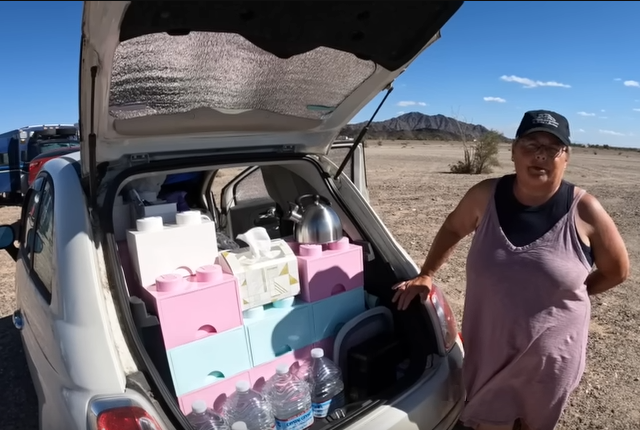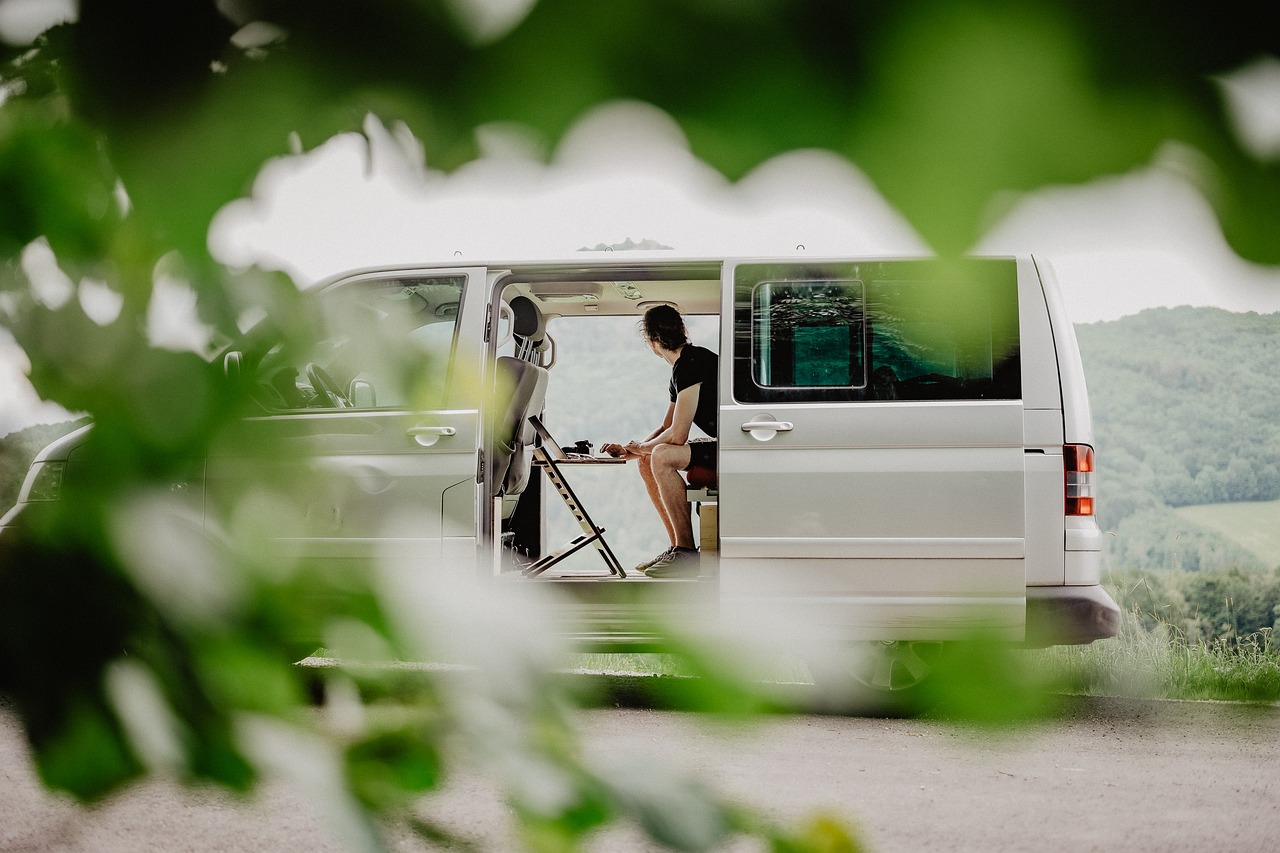Most people in America have a car, and if you live somewhere where you have to have a car in order to get to work, then, if forced to choose between affording your house or your car, your car is probably going to be the better choice. You can live in your car, but you can’t drive your house to work.
I’m not going to lie and say that living out of a car will be easy or fun. It will be neither. But sleeping on a friend’s couch or living in a tent on a sidewalk in the bad part of town will be neither as well. Desperate times call for desperate measures and all that.
But, with a bit of planning and a little work, you can make your car habitable, at least temporarily until you get your feet under you again.
This video is of a young man who is in nursing school and says that he’s being living out of his Camero for 2 years. This is about as tiny as you can get in a car; it’s on par with living out of one of the bicycle campers. But he does seem to have everything down to a science, including cooking. He showers and changes every morning at the gym (as he’s a student, this is probably a gym at school, which wouldn’t cost him anything extra).
As much as I like small spaces, I think I would find living in a car this small claustrophobic, but his video does give you a feel for what it is like to do everything inside a vehicle. Of course, if you have an SUV or van, you will have the ability to move around the space easier, have more headroom, etc. I definitely wouldn’t recommend being inside a car this small for anyone over 40, though; it would take the jaws of life to get you out of it after you spent so much time folded up in there.
(BTW, I recently saw an update video of this young man. He graduated nursing school and has upgraded to living in a Chevy Suburban. He’s saving his money to buy some land and plans on building an off-grid tiny house for himself.)
This middle-aged woman camps for 1-2 months at a time and travels the US inside her teeny Fiat hatchback. It is a no-build design. She took out all the seats in the car, except the driver’s, and uses a piece of plywood set on some 2x4s for a narrow bed. Bins made to look like Lego bricks stack to fill the space in the back, where she has an outdoor kitchen, and inside, where they serve as her dresser. She has an indoor potty and does most of her washing up with baby wipes. (Something my late husband and I both used when we were at re-enactments and bathroom facilities—or hot water at the facilities—weren’t available.) She keeps her hair cut short and she can easily wash it with water outdoors. Casual clothing also makes it easier to dress inside the car.
I don’t know anyone who would find living in such a small car pleasurable long-term, but if you only need a place to stay for a month or two while you’re between houses, this lady proves you can do it. In terms of size, it’s really not much different than a small, 2-person tent. There might be a bit less headroom, but a bit more storage space. Plus it doesn’t leak when it rains, it has a bit more insulation factor, and it’s safer. So rather than look at it as a house, look at it as a mobile tent.
For $100, you can buy a Habitents and turn most hatchback cars and station wagons into livable space. The drawback to this is you can’t stealth camp; once you have the Habitent set up, it will be very obvious that you are camping in your car, which can limit where you do it. It’s also going to be as secure as a tent—meaning not at all (something to be aware of if you will be staying in a dangerous area or a place with bears). But depending on your location or where you can park at night, this may not be an issue for you.
There are a few benefits to this over a regular tent. One is that the hatchback door will prevent overhead leaks that modern tents are prone to. Secondly, it’s clearly much faster to set up since your car serves as the tent frame. Third, in a high-wind environment, it will be much easier to keep this on your car than to keep your tent staked down. And fourth, your bed and gear will stay in the same place, so you don’t have to pack and unpack every time you move to a new location.
The benefit of this over the other car options is that it gives you more headroom–even enough to stand up so you can change clothes easily–so it’s a better option for people who might find the other options too claustrophobic.
If you want to be more stealth, but only have $100 to spend, you can check out this no-build option in the back of a hatchback. And unlike most small builds, it is possible to cook inside this vehicle. Tim also has some good tips about stealthy camping which can work for people in larger vehicles as well.
If you have carpentry skills (or have a friend or family member who does), you can make a similar build to this one, which allows you to sleep inside the car without the use of an additional tent. Cooking still has to be done outside and there’s no way to sit up in bed, have a potty, or stand up to dress, as you can with the Habitent, but you can at least be stealthy when you sleep and have the safety of being locked inside your car.
The only thing I noticed that was missing were privacy panels in the windows so people can’t look in to see you sleeping or to see your gear. As this was meant for camping, not living in, it probably wasn’t a concern, but if you’re going to live in your car, you need to put those in place. (Several other videos show how people make them and install them.)
You will also want to add a memory foam mattress to the bed if you’re going to be in there full time, rather than relying on just a sleeping bag. Every inch of mattress will give you that much less headroom, so you will need to find a balance between that and how much padding you need to sleep comfortably.
Is your car a bit too small a living space for you? Check out this post for other vehicle options. Or consider other nomadic living options.


